Extinct Species and Groups that Would Have Destroyed the World or Effect the Environment
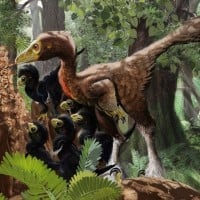 Troodon is a dubious genus of relatively small, bird-like dinosaurs known definitively from the Campanian age of the Cretaceous period. It includes at least one species, Troodon formosus, known from Montana.
Troodon is a dubious genus of relatively small, bird-like dinosaurs known definitively from the Campanian age of the Cretaceous period. It includes at least one species, Troodon formosus, known from Montana. They would have outcompete out native (wild, not domestic) canines of most species if they were brought back from extinction.
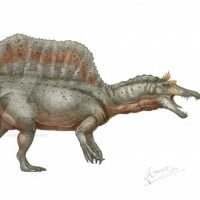
They would have negatively impact native modern crocodilians by preying on them and outcompete native crocodilians to extinction, unless the crocodilians became smaller (to reduce the chance of Spinosaurus finding crocodilians) and/or by becoming fully terrestrial to reduce competition from invasive Spinosaurus.
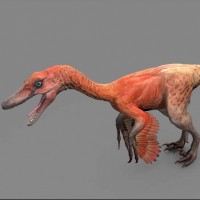
They would most likely outcompete most species of canines and possibly big cats (lions, etc) by preying on the same prey items.
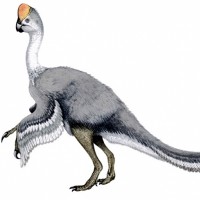
They would have eaten eggs (if this is true) of native egg-laying reptiles and birds of modern times. They would also outcompete native ground birds and some omnivorous mammals.
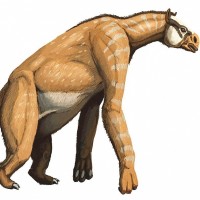
They would have outcompete some native hoofed mammals of modern times. However, they could replace extinct ground sloths (if ground sloths weren't brought back).
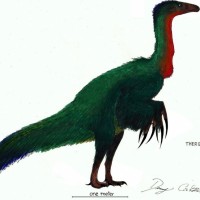
Therizinosaurids, if brought back from extinction, would have no natural predators (other than humans) when they're rhino-sized and would damage the native modern trees by overconsuming them due to the Therizinosaurid's population explosion (much like what happened with many other invasive species that were brought to nonnative areas).
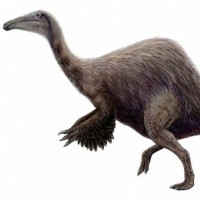
Just like with Therizinosaurids, Deinocheirus, the giant (possibly herbivorous) Ornithomimid, would devastate native modern trees and some other modern plants by overconsuming them, due to the Deinocheirus population growth caused by lack of Deinocheirus's natural predators (Tarbosaurus, etc).
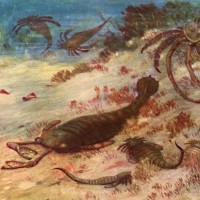
These relatives of modern terrestrial scorpions would have devastated some marine life by eating them and would also overpopulate, just like what happened with invasive king crabs in European seas.
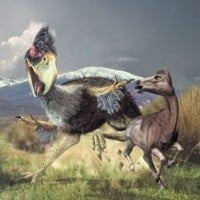
These carnivorous flightless birds, related to native modern seriemas, would outcompete some native mammal predators by preying on the same prey items and would kill livestock.
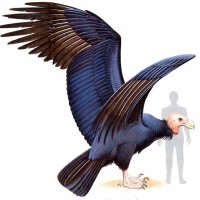
These birds would outcompete many native vultures and condors (including the critically endangered California condor) to extinction due to eating the same source of food, dead animals.
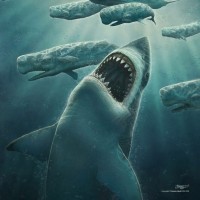 The megalodon is an extinct species of shark which was about 59 feet (18 meters) long and hunted in the seas until about 1.5 million years ago. It was similar to today's great white shark-but three times longer and 20 times heavier.
Megalodon had more than 250 huge, razor-sharp teeth and its mouth was so huge that it could easily swallow a person. The fossils of its teeth were once thought to be the tongues of dragons or similar beasts.
Megalodon was in the same shark group as today's great white shark, mako shark, and porbeagle shark. All of these species of sharks are big, fast, fierce hunters-just like their prehistoric relative.
The megalodon is an extinct species of shark which was about 59 feet (18 meters) long and hunted in the seas until about 1.5 million years ago. It was similar to today's great white shark-but three times longer and 20 times heavier.
Megalodon had more than 250 huge, razor-sharp teeth and its mouth was so huge that it could easily swallow a person. The fossils of its teeth were once thought to be the tongues of dragons or similar beasts.
Megalodon was in the same shark group as today's great white shark, mako shark, and porbeagle shark. All of these species of sharks are big, fast, fierce hunters-just like their prehistoric relative. If this shark was this alive it would had kill endangered species and other sharks
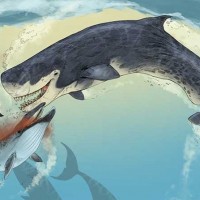
This giant whale would have devastated large whale populations as they are highly predatory and would kill off blue whales to extinction. They would also be a threat to humans and boats if they mistaken boats for whales and see humans as prey items.
This thing would have caused huge impact on native species if it was still alive
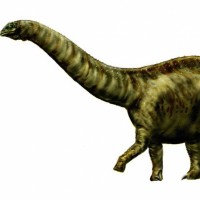
There were several dinosaur species closely related to the well known Apotosaurus. They’re not predators or well protected, but if too many were corralled into one small area (ex southern Florida), all of the plants would either be eaten or crushed. The entire ecosystem would collapse.
 Stegosaurus is a type of armored dinosaur. Their fossil bones have been found in rocks dated to the Late Jurassic period, between 155 and 150 million years ago, in the western United States and Portugal.
Stegosaurus is a type of armored dinosaur. Their fossil bones have been found in rocks dated to the Late Jurassic period, between 155 and 150 million years ago, in the western United States and Portugal. Stegosaurus, if brought back from extinction, would have no natural predators when fully grown (or even almost fully grown). They would also devastate fruit crops, native shrubs and other forms of food meant for modern browsers. They would almost certainly flourish in today's world.
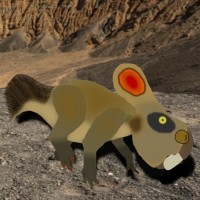 Protoceratops is a genus of sheep-sized herbivorous ceratopsian dinosaur, from the Upper Cretaceous Period of what is now Mongolia.
Protoceratops is a genus of sheep-sized herbivorous ceratopsian dinosaur, from the Upper Cretaceous Period of what is now Mongolia. This animal, if brought back from extinction, would outcompete many browsing animals native to modern times (if herbivorous) and/or could hunt small animals/eggs (if omnivorous). They were about as common as today's sheep in their native range, but in modern times, due to lack of its natural predators (Tarbosaurus, etc), they would flourish and their population would explode into that twice the size of their populations of the Late Cretaceous, therefore overconsuming our native plants and/or small animals/eggs.
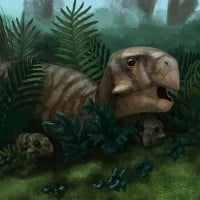 Psittacosaurus is a genus of extinct ceratopsian dinosaur from the Early Cretaceous of what is now Asia, existing between 123.2 and 100 million years ago.
Psittacosaurus is a genus of extinct ceratopsian dinosaur from the Early Cretaceous of what is now Asia, existing between 123.2 and 100 million years ago. Just like Protoceratops, Psittacosaurus, if brought back from extinction, would outcompete many browsing animals native to modern times. They were probably about as common as today's deer in their native range, but in modern times, due to lack of its natural predators (large carnivorous theropods, etc), they would flourish and their population would explode into that twice or more the size of their populations of the Early Cretaceous, therefore overconsuming our native plants.
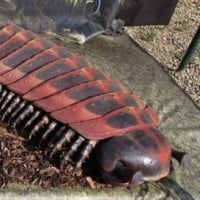
These giant millipedes would have flourished in modern Earth, if they were genetically engineered to adapt to modern oxygen levels and climate, they would devastate farmed crops like cabbages, lettuce, etc.
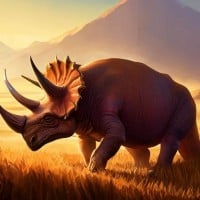 Triceratops is a genus of herbivorous ceratopsid dinosaur that first appeared during the late Maastrichtian stage of the late Cretaceous period, about 68 million years ago in what is now North America.
Triceratops is a genus of herbivorous ceratopsid dinosaur that first appeared during the late Maastrichtian stage of the late Cretaceous period, about 68 million years ago in what is now North America. Triceratops, if brought back from extinction, would outcompete many browsing animals native to modern times. They were the most common non-avian dinosaur in their native range and time, but in modern times, due to lack of its natural predators (large carnivorous theropods, etc), they would flourish and their population would explode into that twice or more the size of their populations of the Late Cretaceous, therefore overconsuming our native plants.
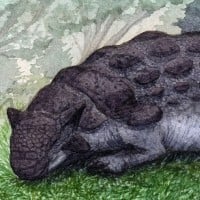 Ankylosaurus is a genus of armored dinosaur. Fossils of Ankylosaurus have been found in geological formations dating to the very end of the Cretaceous Period, between about 68–66 million years ago, in western North America, making it among the last of the non-avian dinosaurs.
Ankylosaurus is a genus of armored dinosaur. Fossils of Ankylosaurus have been found in geological formations dating to the very end of the Cretaceous Period, between about 68–66 million years ago, in western North America, making it among the last of the non-avian dinosaurs. Ankylosaurus, if brought back from extinction, would outcompete many browsing animals native to modern times. They were uncommon non-avian dinosaur in their native range and time, but in modern times, due to lack of its natural predators (large carnivorous theropods, etc), they would flourish and their population would explode into that twice or more the size of their populations of the Late Cretaceous, therefore overconsuming our native plants.
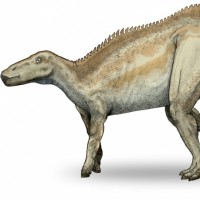
Many different species of Hadrosaurs, if brought back from extinction, would outcompete many browsing animals native to modern times. They were the most common non-avian dinosaurs in their native range and time, but in modern times, due to lack of its natural predators (large carnivorous theropods, etc), they would flourish and their population would explode into that twice or more the size of their populations of the Late Cretaceous, therefore overconsuming our native plants.
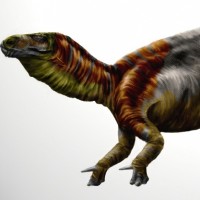
Many different species of Hadrosaurs, if brought back from extinction, would outcompete many browsing animals native to modern times. They were the most successful non-avian dinosaurs in their native range and time, living in almost every single continent, but in modern times, due to lack of its natural predators (large carnivorous theropods, etc), they would flourish and their population would explode into that twice or more the size of their populations of the Early and Late Cretaceous, therefore overconsuming our native plants.
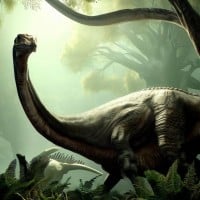 Brachiosaurus is a genus of sauropod dinosaur that lived in North America during the Late Jurassic, about 154–153 million years ago.
Brachiosaurus is a genus of sauropod dinosaur that lived in North America during the Late Jurassic, about 154–153 million years ago. Just like Apatosaurus, Brachiosaurus would have no natural predators in modern times (if Brachiosaurus was brought back from extinction), they would overconsume our native modern day plants.
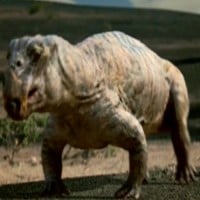
These large herbivores, not reptiles nor dinosaurs, but early relatives of mammals, if brought back from extinction, would outcompete some native modern browsers and would overconsume our native plants, seeing how common they were in the Early Triassic (when they were the dominant herbivores and the most successful large animals of that time), their populations would explode in a similar way in modern times, devastating native plants.